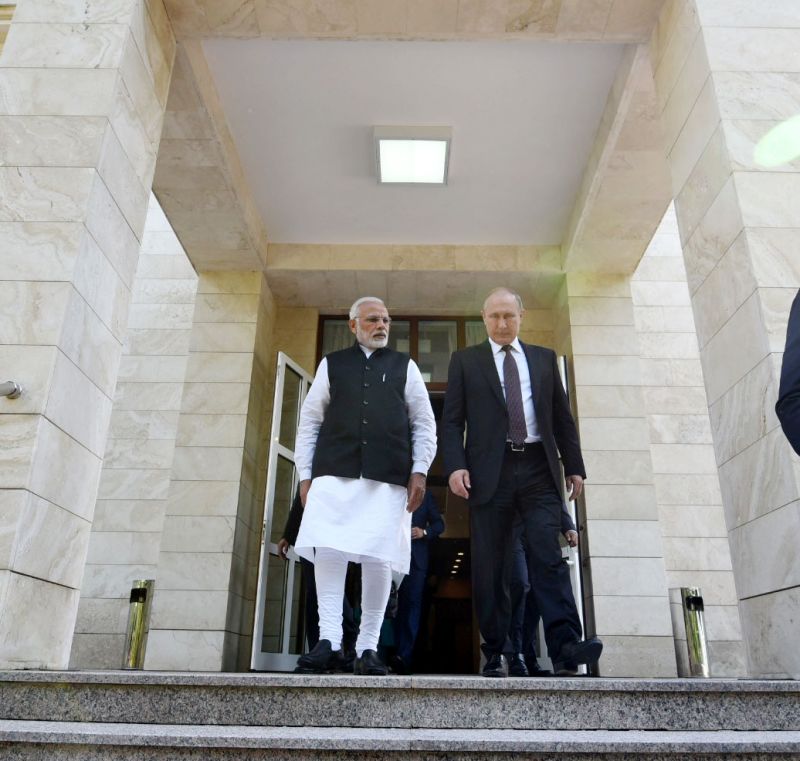Defence purchase – Russia vs US
By Rohit Srivastava

US Secretary of State Mike Pompeo is arriving in New Delhi on June 25 for a two-day visit. This is the first visit of a senior minister from the USA after the formation of the new government in India. The significance of this visit has increased due to heightened hostility in the Middle East, the trade dispute between the two countries and US’ opposition to Indo-Russian S-400 missile deal.
Reportedly, India is planning to purchase ten more P8I long-range maritime reconnaissance and strike aircraft for over $3 billion. India already operates eight of these aircraft and has ordered for four more which are expected to arrive in two years time. India is also pursuing the purchase of 24 MH-60 Romeo multi-role naval helicopters with significant anti-submarine capabilities. These will be placed on Indian Naval Ships. This deal is worth over $ 2.5 billion.
During the Indian Prime Minister Narendra Modi visit to the US in 2017, US government gave its consent for sales of General Atomics Sea Guardian (Predator B), the naval version MQ-9 high altitude long endurance unmanned aerial vehicle. India is expected to purchase 30 of these UAVs for Indian Navy and Indian Army for $ 2.5 billion.
In July last year, India approved the purchase of the NASAMS II air defence system for securing Delhi from aerial threats. This is expected to send one billion dollars to the US. India will pay another one billion for six additional Apache attack helicopters. India has already received first Apache of its 22 chopper order.
Once all of these deals are inked, Indian exchequers will be paying around $ 10 billion. This is just a few billions less than the combined cost of defence agreements signed between India and Russia since last October.
India is purchasing five regiments of S-400 long-range surface-to-air missiles for $5.5 billion, four advanced frigates for over $2 billion, 200 Ka-226T helicopters for $1billion, 7.5 lakh AK-203 assault rifles for around $2billion, 21 MiG-29 for less than a billion, 18 Su-30MKI for over a billion, 10 Ka-31 airborne early warning helicopters for half a billion dollars. In addition to this, India is procuring large number ordnance for its Russian weapon system which includes anti-tank missiles and rocket artillery. India will also be paying $3 billion for the lease of next Akula Class nuclear attack (Chakra III) submarine.
India has also approved purchase 464 T-90 tanks for around $2 billion.
Indian government appeared to have made a distinction between the two nations. The deals with Russia will ensure across the board capability of the Indian armed forces, from arming the humble soldier with a modern, sleek and affordable assault rifle, ending a decade-old woe, to providing India with arguably the world’s most capable S-400 air defence system. Only Russia can provide India with a nuclear submarine. India understands and respects that.
The significance of Indo-Russia defence cooperation lies in the mutual dependence of both nations on each other. Unlike the US, Russia does not demand special agreements for defence trade and has been open to sensitive technology transfer. On the other hand, the US is pushing India to cancel the S-400 deal and offering THAAD as a replacement system. This is not very friendly behaviour.
India, like Turkey, is not expected to succumb to US demand and will go ahead with the deal.
(pic from last year's India-US 2+2 meeting)
India has made a reasonable distinction between the two adversaries. It is purchasing systems which are most suitable to India’s needs, like P8I and Sea Guardian. There are not many comparable systems available in the market. India needs these systems to have anti-access/area-denial capability against the expanding Chinese Navy in the Indian Ocean region.
In spite of a deal worth $10 billion ready to be signed why US is still pushing for CATSAA? The answer lies in the volume of the contract. According to SIPRI, “US exports of major arms were 75 per cent higher than Russia’s in 2014–18.” US export around $40 billion of weapons through Foreign Military Sales route and gives approvals for sales of weapons worth over $130 billion through direct commercial sales.
The Indian purchase list will make for less than three per cent of the US military sales. This is the single most important reason why Washington is being insensitive to Indian needs and sentiments.
India is expected to continue to have a balanced approach towards the military needs and strategic independence.




